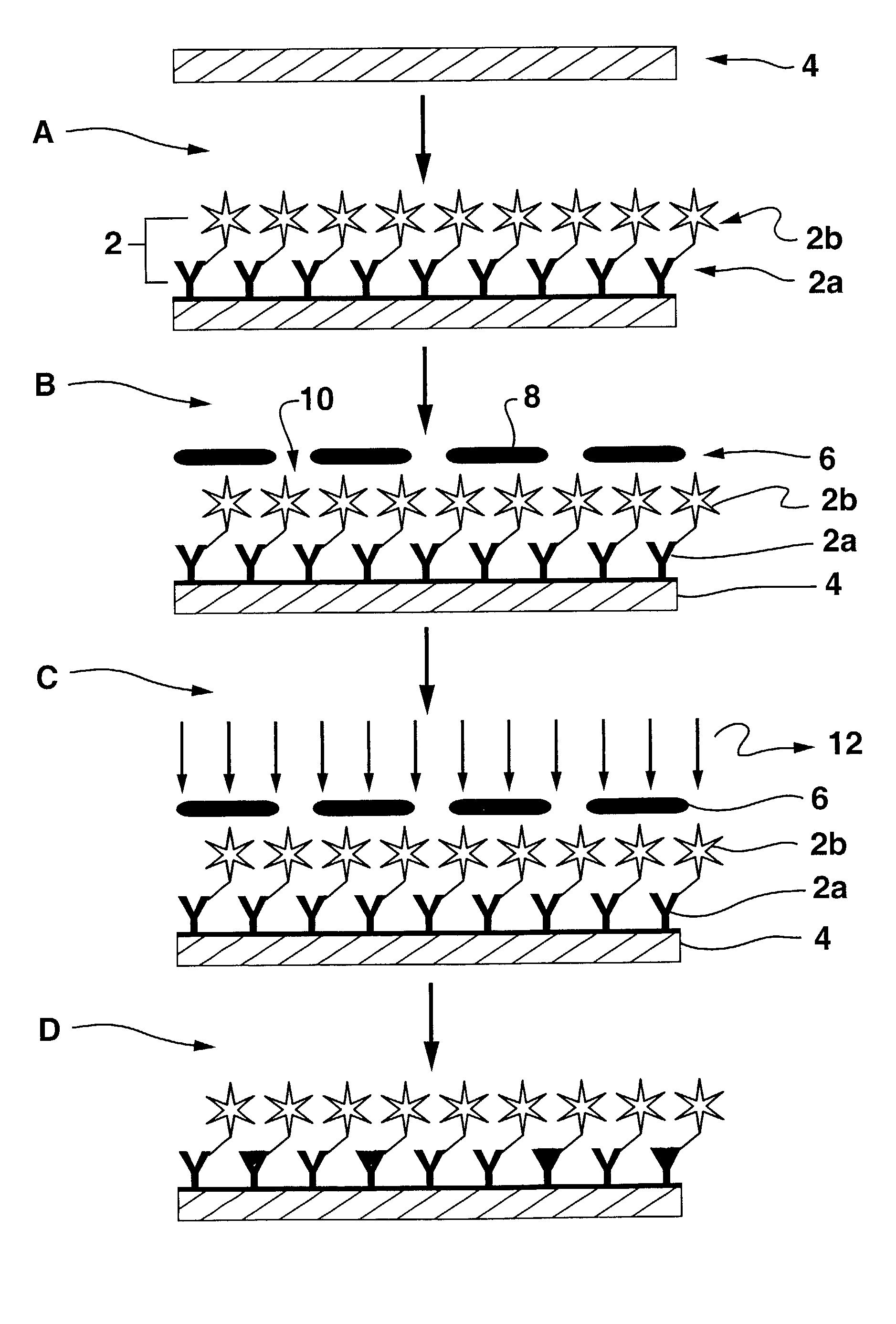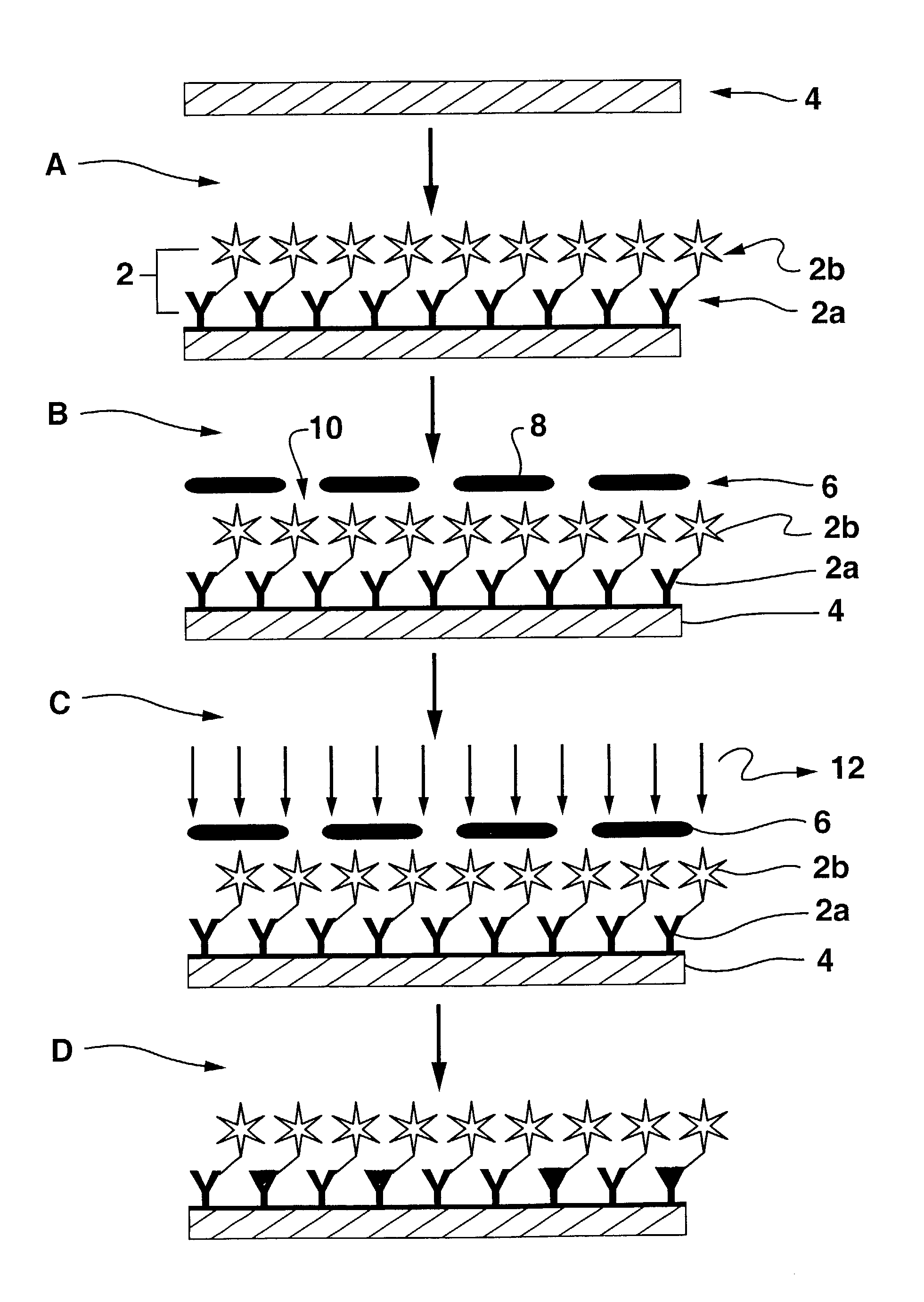Diffraction-based diagnostic devices
a diagnostic device and diffraction technology, applied in the field of detecting analytes in a medium, can solve the problems of complex visualization device, high cost of prior systems and devices, and inability to view the diffraction pattern without training
- Summary
- Abstract
- Description
- Claims
- Application Information
AI Technical Summary
Benefits of technology
Problems solved by technology
Method used
Image
Examples
Embodiment Construction
[0021]The invention will now be described in detail with reference to particular embodiments thereof. The embodiments are provided by way of explanation of the invention, and not meant as a limitation of the invention. For example, features described or illustrated as part of one embodiment may be used with another embodiment to yield still a further embodiment. It is intended that the present invention include these and other modifications and variations as come within the scope and spirit of the invention.
[0022]The present invention features improved biosensing devices, and methods for using such biosensing devices, for detecting and quantifying the presence or amount of an analyte of interest within a medium. The analytes that can be detected by the present invention include, but are not limited to, microorganisms such as bacteria, yeasts, fungi and viruses. The biosensing devices according to the invention are relatively inexpensive and have advantages over conventional micro-co...
PUM
| Property | Measurement | Unit |
|---|---|---|
| thickness | aaaaa | aaaaa |
| thickness | aaaaa | aaaaa |
| wavelength | aaaaa | aaaaa |
Abstract
Description
Claims
Application Information
 Login to View More
Login to View More - R&D
- Intellectual Property
- Life Sciences
- Materials
- Tech Scout
- Unparalleled Data Quality
- Higher Quality Content
- 60% Fewer Hallucinations
Browse by: Latest US Patents, China's latest patents, Technical Efficacy Thesaurus, Application Domain, Technology Topic, Popular Technical Reports.
© 2025 PatSnap. All rights reserved.Legal|Privacy policy|Modern Slavery Act Transparency Statement|Sitemap|About US| Contact US: help@patsnap.com


